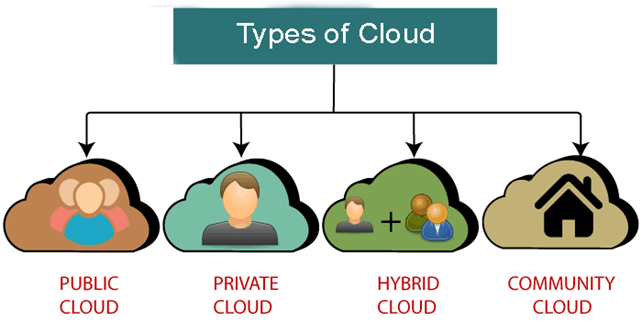Cloud Computing is termed as the idea of data storage and then accessing that data, further computing those services on the internet or we can say virtually. This way the data isn’t present actually on the user’s personal computer. It is the demand of the era where people are currently facing a major storage issue along with services like servers, network-based problems, databases, etc. The main purpose of cloud computing is to give access to data centers to many users. Users can also access data from a remote server. It is an upcoming technology that will use remote servers on the internet for the storage, management, and accessing of the data online rather than on local drives. The data can involve any of these things such as files, images, docs, audio, video, and much more.
Goals
- Development of services and applications from the scratch
- Storing, backup, and recovering the data
- Delivering software solutions
- Data analysis
- Data Streaming
Need For Cloud Computing
Both small and large IT companies follow the conventional methods to provide the IT infrastructure. That means for an IT company, we need a Server Room which is the basic need of IT companies. Basically, in that server room, there should be a database server, mail server, networking, firewalls, routers, modem, switches, QPS (Query Per Second). It means the number of queries or load will be handle by the server, configurable system, high net speed, and the maintenance engineers. However, establishing such an IT infrastructure becomes very expensive.
Cloud computing also reduces the demands on hardware as well as software. The only thing that users must be able to run is the cloud computing systems interface software, which can be as simple as a Web browser, and the Cloud network takes care of the rest. We all have experienced cloud computing at some instant of time, some of the popular cloud services we have used or are still using are mail services like Gmail, Hotmail or Yahoo, etc.
Development in the cloud will enable the users to get their applications to market quickly.
Data security: Hardware failures do not result in data loss because of networked backups.
Savings on equipment: Cloud computing uses remote resources, saving organizations the cost of servers as well as other equipments.
Characteristics of Cloud Computing
- High Reliability: The availability of servers is high and more reliable because the chances of infrastructure failure are minimum.
- Swiftness: The cloud works in a distributed computing environment. It shares resources among users and works very fast.
- Scalability: Cloud offers “on-demand” provisioning of resources on a large scale, without having engineers for peak loads.
- Multi-sharing: With the help of cloud computing, multiple users and applications can work more efficiently with cost reductions by sharing a common infrastructure.
- Device Independence: Cloud computing enables the users to access systems using a web browser regardless of their location or what device they use e.g. PC, mobile phone, etc. As infrastructure is off-site and accessed via the Internet, users can connect from anywhere.
- Cost-effectiveness: By using cloud computing, the cost will be reduced because to take the services of cloud computing, an IT company need not set its own infrastructure and pay-as-per usage of resources.
- Maintainance: Maintenance of cloud computing applications is actually easy as there is no need for installation on each computer owned by the user. Hence, it is then easily accessible from different places. So, it reduces the cost too.
Types of Cloud Computing
There are basically four different cloud models. Below is a description of them:
- Private Cloud: In this type of cloud, computing resources are deploy for one particular organization. This method is more used for intra-business interactions. Where the computing resources can be governed, owned, and operated by the same organization
- Community Cloud: The resources are provided for a community and organizations.
- Public Cloud: This type of cloud is usually for B2C (Business to Consumer) type interactions. Here the computing resource is owned, governed, and operated by the government, an academic or business organization.
- Hybrid Cloud: This type of cloud can be present for both types of interactions – B2B (Business to Business) or B2C ( Business to Consumer). This deployment method is called a hybrid cloud as the resources are bound together by different clouds.
Advantages of Cloud Computing
- Restoring Data : Once the data is there in the cloud, it is easier to get back up and restore that data using the cloud.
- Accessibility : Cloud allows us to quickly and easily access store information anywhere, anytime in the whole world, using an internet connection. An internet cloud infrastructure increases organization productivity and efficiency by ensuring that our data is always accessible.
- Cost : Cloud computing reduces both hardware and software maintenance costs for organizations.
- Mobility : The cloud allows us to easily access all cloud data via mobile
- Services : Cloud computing offers Application Programming Interfaces (APIs) to the users for access services on the cloud. It pays the charges as per the usage of service.
- Storage : Cloud offers an unlimited amount of storage capacity for storing our important data. Data san be in forms like documents, images, audio, video, etc. in one place.
Apart from all the advantages we have discussed above, there come a lot of challenges also. While sending the data on the cloud, there may be a chance that your organization’s information is hacked by Hackers. Hence, there exist security issues in the cloud. Another issue that comes with cloud computing is cloud infrastructure is completely owned, managed, and monitored by the service provider, so the cloud users have less control over the function and execution of services within a cloud infrastructure.
Cloud computing provides benefits in a lot of areas such as healthcare, education, government, communication, big data analysis, businesses, etc. Hence, we can conclude as within no time cloud is going the be the utmost essential utility for people.




